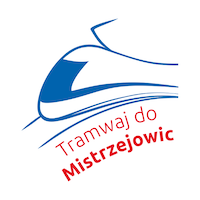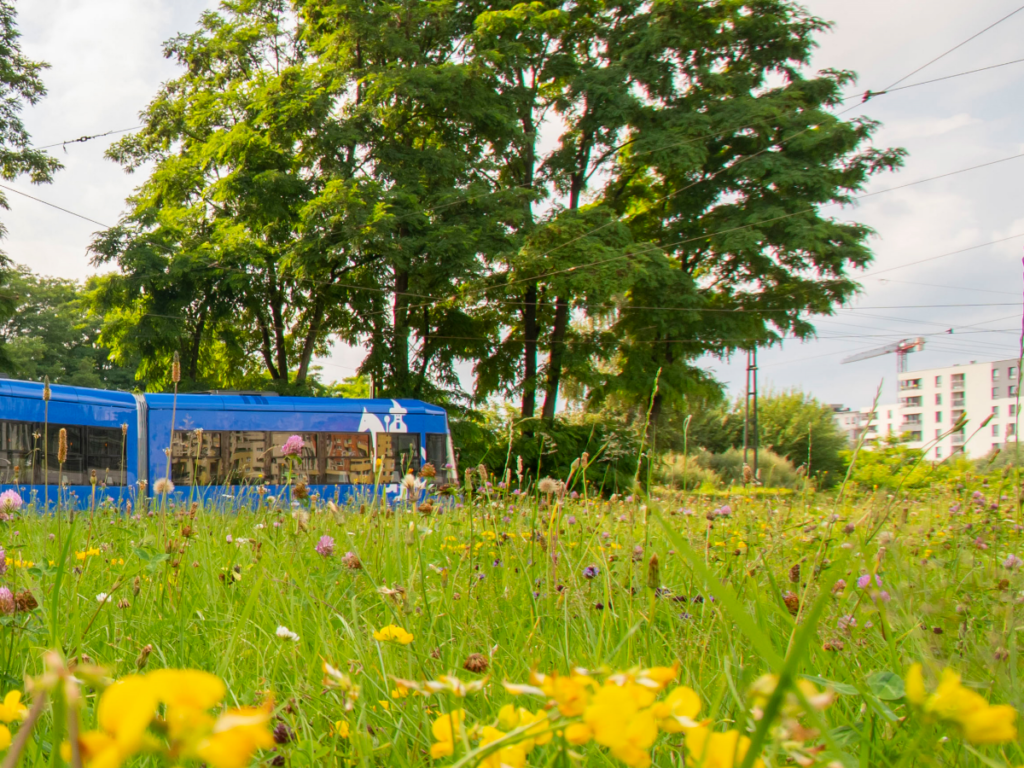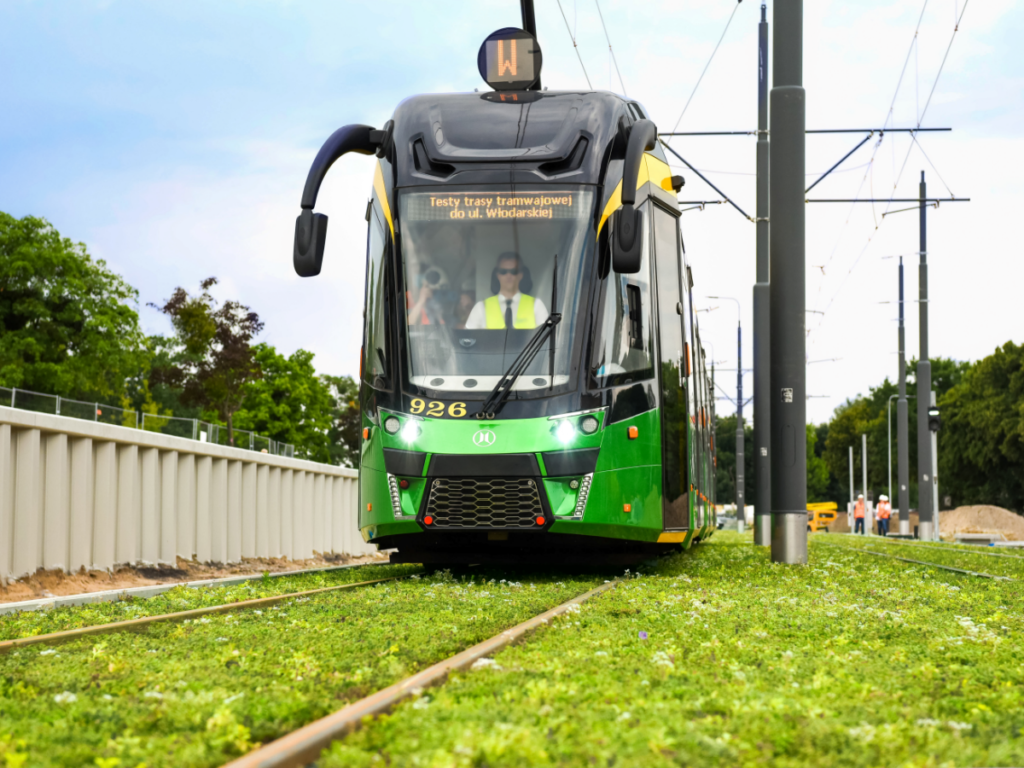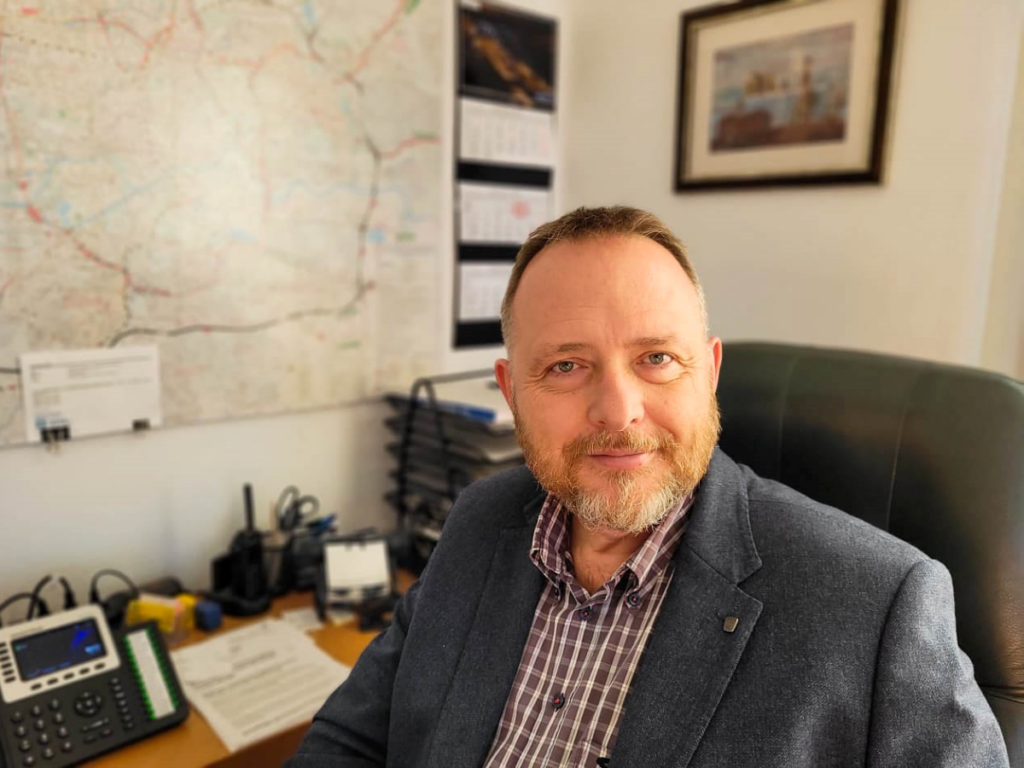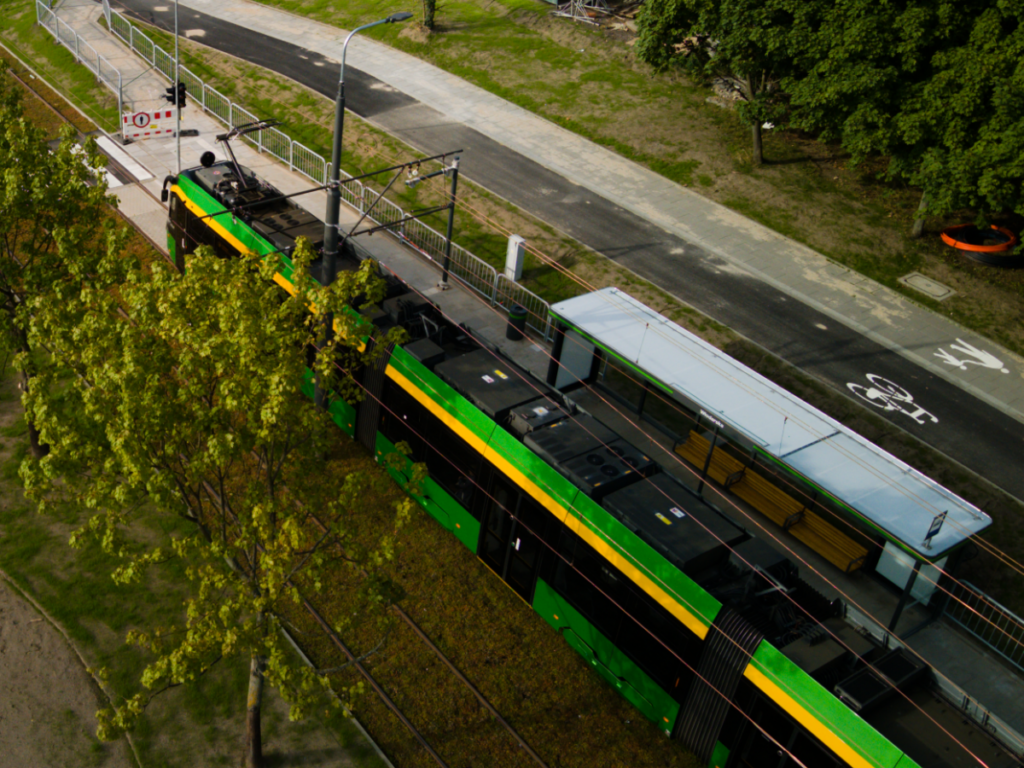There is more into the tramway to Mistrzejowice than a trackbed. It is an urban set-up developed almost from scratch which must support a number of functions. It will not be complete without new plantings designed as part of the vegetation management project. The plan is to introduce over 1,000 new trees in the area of the investment as well as almost 6,500 sqm of shrubs.
Vegetation under scrutiny
The first predevelopment plan along the future KST IV route was made in 2015 at the stage of preparing the environmental impact report. Already then it was revealed that the condition of a large part of the trees leaves much to be desired: mechanical damage to the bark, frost ribs, mushroom fruiting bodies, droughts, deviations from the vertical. These factors may contribute to further degradation of these plantings. In total, 75% of the trees listed were selected for removal, of which 7% were intended for sanitary cuts.
In the spring of 2021 and at the request of the private partner, another predevelopment plan was made, which – given how important vegetation is for the Kraków residents – was repeated in the summer (as part of the verifying and supplementary predevelopment). On top of that, the contractor personally supervised and reviewed the location and condition of each single tree which could still be saved. “We have been looking at every single tree as an individual case. An environmental protection specialist and construction site manager have been scrutinizing the cases of trees colliding with the planned infrastructure. This way the design was modified so that at the design assumptions stage a row of 23 birches at Meissnera street could be saved or black locust at the Bareja roundabout” – says Paweł Motyka, Deputy Project Manager at Gülermak. It was also possible to reduce the area of shrub clearance by 6.2%.
International standards
Nevertheless, the predevelopment confirmed the findings from the environmental impact report: most plantings directly collide with the planned tramway route, newly designed pedestrian and bicycle routes or the planned alterations of heat pipeline, sanitary sewers network, gas pipelines or electricity systems. “The project is implemented in a partnership formula, but environmental protection matters were outside of the scope of any negotiations while preparing the contract. There can be no breach to the decision on environmental conditions agreed upon with the local community. The aim of the project is to improve the comfort of residents” – says Marcin Hanczakowski, Director of Kraków Municipal Road Authority (ZDMK).
In addition, given the process of obtaining funding for the project implementation, the requirements of banks approached by the private partner are also taken into account. Since international financing institutions are to be involved, the project must meet not only Polish legal requirements, but also international standards in the field of environmental protection and vegetation management.
Urban-resistant species
You cannot simply ignore that 60% of trees covered by the predevelopment plan have defects, among others drought, humus or traces of pest feeding. 5% are decaying. Some have never been a good fit for urban environment.
The contractor shall replace them with species that are more resistant to traffic pollution, drought, frost and salinity. As part of the vegetation management project developed over 1,000 new trees (e.g. common oak, hornbeam, small-leaved lime, Japanese creeper) will be planted in the area of the investment as well as almost 6,500 sq.m. of shrubs.
“We design cover vegetation that absorbs dust and other impurities as well as decorative vegetation in the form of clusters and cut hedges that create aesthetic multicolored compositions. Wherever technically possible, sedum mats will be placed on the trackbed as an all-year-round aesthetic solution” – says Agnieszka Gurgacz, environmental protection specialist with Gülermak. They are also easy to maintain: they don’t need to be watered or mowed as often as grass which saves resources and money. Decorative plantings (including roses) are considered along the investment as well as the so-called green stops and flower meadows. Eventually, as much as 74% of the area used for the construction of the tram route is to be biologically active. This is the same as 4,514 perpendicular parking spaces.
How trees will be selected for replanting?
The predevelopment also made it possible to select trees for replanting. A meticulous approach to the matter enabled qualifying several dozen young trees for relocation. According to estimates, the age limit for the adaptation of a replanted tree is 20-25 years. The chances for surviving are dropping to below 30% for older trees.
“It is a truth commonly acknowledged that you should not replant old trees – says Agnieszka Gurgacz. – The survival of an older tree in a new environment is very difficult for many reasons and it can take up to 3 years to prepare it for the actual relocation. During this time its roots must be cut in a special way” – explains the expert.
The area of the investment features a number of species that do not tolerate replanting, e.g. English oak, walnut, spruce. There is a high risk of drying out. In turn, features like good phytosanitary condition or symmetry boost chances for successful replanting.
***
Building a new tramway infrastructure in an existing urban set-up requires compromise and taking into account the interests of many parties. On top of a fast and reliable public transport, residents expect comfortable bicycle paths, wide pavements, lighting that boosts security and neat land development.
Vegetation is part of it. Apart from its aesthetic value, it performs many functions important for the city: it lowers the real feel temperature in the summer and stimulates biodiversity. That is why a vegetation management design is so important and is preceded by a detailed predevelopment plan. It determines the species of trees and shrubs growing in the project impact zone and allows for measuring the circumference of trunks, estimating the height and diameter of crowns and establishing the condition of each tree. The plan serves as the basis for revealing possible collisions with the planned infrastructure and identifying the avoidable ones. Compensation plantings along the investment are also designed. It is important that they have the best chance of surviving for many years in difficult urban conditions, especially given the increase in the average temperature on Earth.
